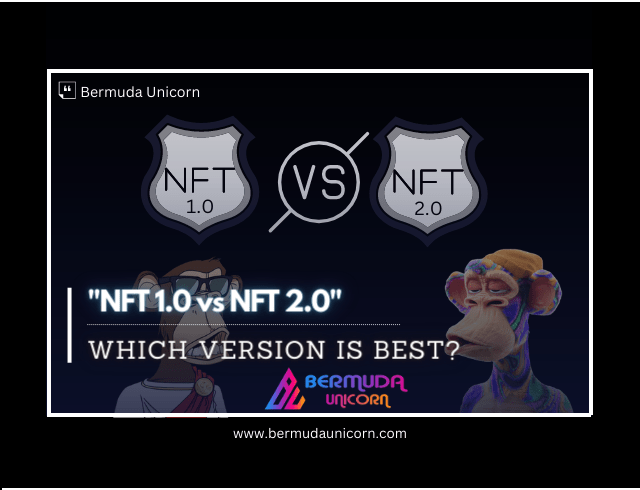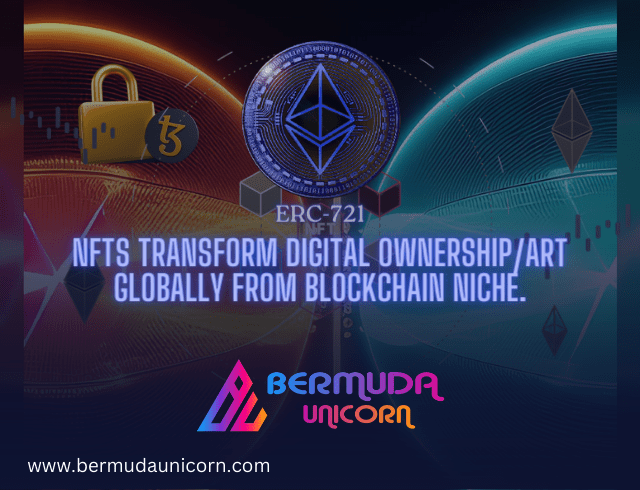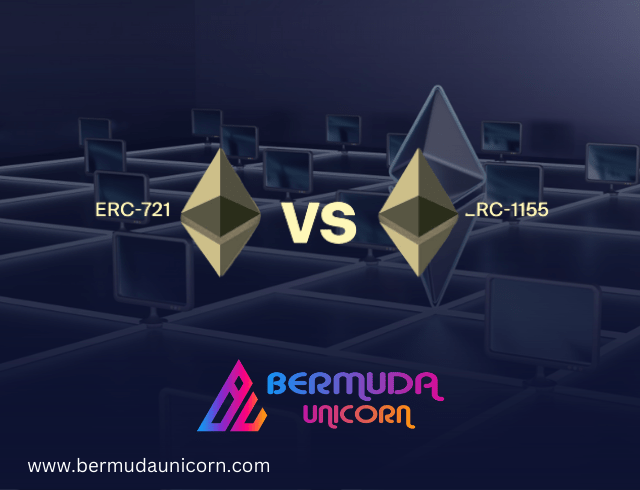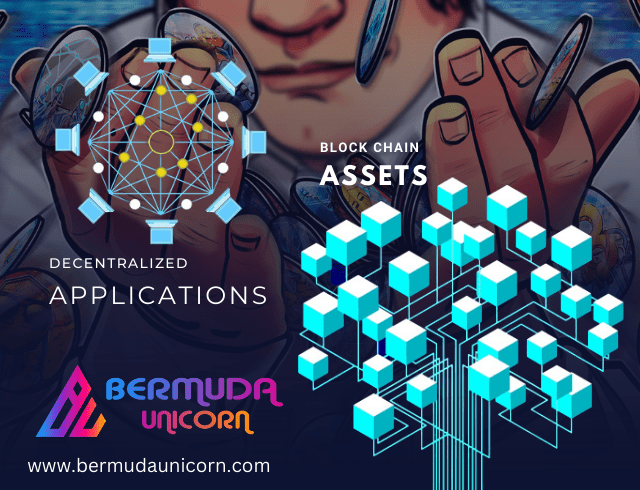![]()

NFTs are making a huge splash in the digital asset market, and there is much discussion about which version of this technology is best: NFT 1.0 or NFT 2.0. Non-Fungible Tokens (NFTs) are unique digital assets that have become increasingly popular over the past few years. They provide an alternative way to own, collect and trade digital items such as artwork, music, and more.
What are NFTs?
NFT 1.0 (Non-Fungible Tokens) are digital assets that represent a single, unique item or asset. They are usually used to represent digital art, collectibles, and user-generated content such as tweets and posts. These tokens are designed to be stored on public blockchain networks, allowing users to securely store them without relying on a centralized third party. This ensures that the asset can’t be changed or manipulated by others, making it immutable and tamper-proof.
NFT 2.0 (Non-Fungible Tokens) is an upgraded version of NFTs that allows for more customized and complex tokens as compared to the traditional one. It offers more flexibility in terms of token structure and metadata associated with it. These advanced tokens also allow for increased security over the previous model by enabling multi-signature authentication protocols and smart contracts which limit access to specific parts of the token data depending on who is trying to access it. Additionally, these enhanced NFTs also support fractional ownership models which can open up new forms of investments or trading platforms for users who may not have had access before due to high costs or lack of liquidity options in existing markets like art or collectibles marketplaces.
History of NFTs

NFT 1.0 is the first generation of Non-Fungible Tokens (NFTs). These tokens are digital assets that can be used to represent ownership rights over an asset or a service in a blockchain network. NFT 1.0 tokens are usually built on the Ethereum blockchain and use the ERC-721 protocol, which allows them to be traded as easily as other digital assets on the blockchain such as cryptocurrencies. The primary benefit of using NFT 1.0 tokens is that they provide users with immutable proof of ownership and authenticity for their digital assets, making them highly desirable for collecting purposes.
NFT 2.0 is the latest iteration of NFTs and builds upon the features already present in NFT 1.0 tokens by adding additional features such as improved scalability, privacy, interoperability, and more efficient transaction costs compared to previous versions. This new version also adds support for smart contracts and decentralized applications (dapps) which opens up new possibilities for how these tokens can be used in various contexts outside of just collecting or trading digital content. While there is still some debate about which version of NFTs is better suited for certain use cases, both versions have their own advantages depending on what you’re looking to do with your tokens and what kind of environment you’re trying to build around them.
NFT 1.0 Overview
Non-fungible tokens (NFTs) have become popular over the past few years. The two main versions are NFT 1.0 and 2.0 which have some differences between them.
NFT 1.0 originated in 2017 and is based on the Ethereum blockchain’s ERC721 token standard, allowing individuals to create unique digital assets such as artwork, music, or collectibles that can be bought, sold, or traded on a blockchain platform like Ethereum or Bitcoin. This version of NFTs is currently used by several different platforms for various applications such as gaming and art trading. It also provides users with a high degree of control over their assets since they are stored in their own personal wallets and can only be accessed with the user’s permission.
In contrast to NFT 1.0, NFT 2.0 was launched in 2020 and is based on the ERC1155 token standard which allows for more flexibility when it comes to transferring digital assets from one wallet to another as well as providing better asset protection features such as multi-signature authentication and non-custodial storage solutions which make it even harder for hackers to access a user’s funds or data illegally.

NFT 2.0 Overview
NFT 2.0, also known as Non-Fungible Tokens 2.0, is a major upgrade to the original version of NFTs, designed to improve scalability and create more interoperability between different blockchains. The original version of NFTs suffered from several issues including scalability, lack of interoperability, and user experience. In response to these issues, developers created a new set of tools that allow for faster transactions as well as integrated functions for advanced use cases such as smart contracts and other blockchain-based services. Additionally, NFT 2.0 includes features like tokenized assets on any blockchain network and an API that provides smoother interactions between different blockchains. With this new technology, users can store their digital assets on any existing platform or even create their own custom tokens with advanced functions like smart contracts or tokenized assets available right away through the API integration feature. Finally, the improved user experience in NFT 2.0 makes it easier to use and more accessible than ever before while still being extremely secure due to its decentralized nature across multiple networks and platforms which prevents any single point of failure or attack surface area from existing in the chain itself.
Pros & Cons: NFT 1.0 vs. 2.0
NFT 1.0 is the original type of NFT, which only uses digital assets and was created as a way to verify ownership of these digital assets. It has been around since 2017 and is used in various industries such as gaming, art, music, films, and other collectibles. The main advantage of NFT 1.0 is its low cost compared to traditional methods such as paper contracts or physical objects for verifying ownership. However, this technology does not provide any additional features apart from verifying ownership.
On the other hand, NFT 2.0 offers more features than classic versions like blockchain-based encryption & authentication protocols which ensure that no unauthorized person can access the asset or interfere with its usage rights & conditions set by its owner while also keeping track of its transactions history & authenticity verification procedures in real-time protecting it from scams & counterfeits. Additionally, it allows users to interact with their assets in innovative ways such as creating new content based on existing ones or selling/trading them on dedicated marketplaces without having to go through complex legal paperwork and costly fees associated with traditional platforms.
Applications of Each Version
NFT 1.0 is the original version of Non-Fungible Tokens and is used when users need to prove ownership of a digital asset, such as artwork or a virtual world asset like a house. It has been around since 2017 and uses cryptographic tokens on the Ethereum blockchain to store data about an item’s authenticity, rarity, and origin. One example application of NFT1.0 is Cryptokitties, which allows users to buy, sell, breed and trade virtual cats.

NFT 2.0 takes the concept of NFTs further by adding more features such as programmable smart contracts that allow decentralized applications (dApps) to be built on top of them for more complex use cases such as in-game assets or digital collectibles with multiple layers of ownership rights. As compared to NFT 1.0, it offers many advantages including improved security for digital assets due to enhanced encryption protocols; better scalability with faster transaction speeds; flexibility since users can create their own smart contracts; and interoperability with other blockchains so that assets can be traded between different networks seamlessly. Some examples include CryptoCelebrities where users can purchase celebrity cards or CryptoPunks where players can collect unique pixel art characters from around the world.
Conclusion: Which Version is Best?
After considering the pros and cons of each version, it is now clear that there is no definite answer to this question. It ultimately depends on the needs of the user. For example, NFT 1.0 offers a more secure and reliable platform for managing digital assets while NFT 2.0 provides a higher degree of interoperability among different smart contract platforms. Therefore, if security and reliability are important considerations, then NFT 1.0 may be preferable whereas if interoperability is a priority then NFT 2.0 is likely the better choice.
It is also worth noting that both versions have their own advantages and it may even be beneficial to use both technologies in tandem depending on what type of asset one wishes to manage or create using non-fungible tokens (NFTs). Ultimately, it comes down to personal preference as neither version can be said to be definitively best than the other in all situations; although some may find one or other more suitable for their particular needs or requirements.
